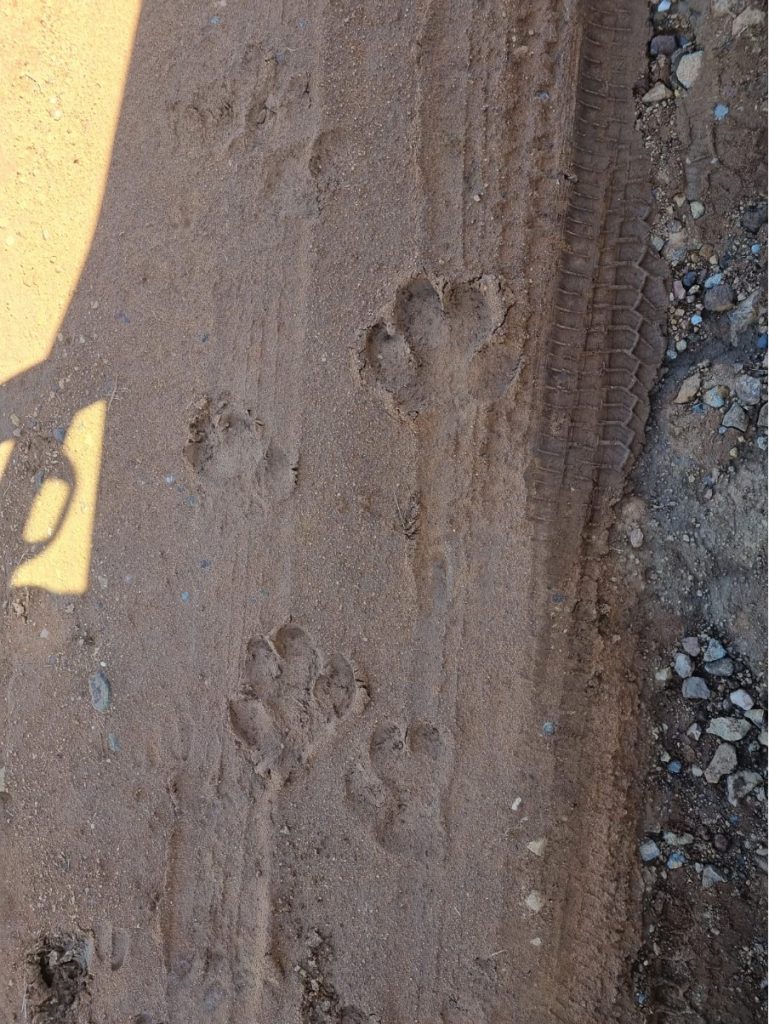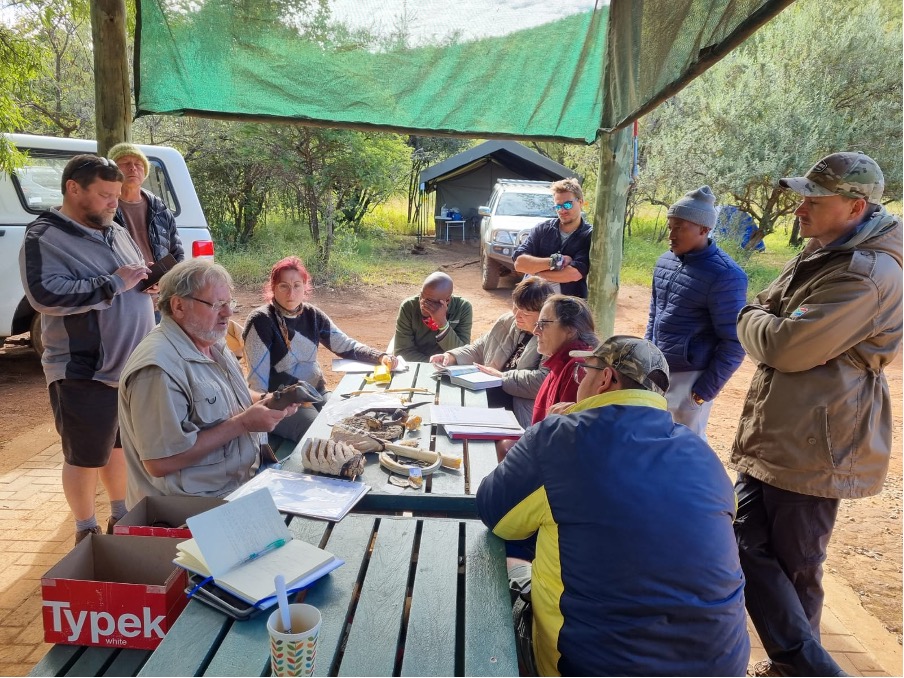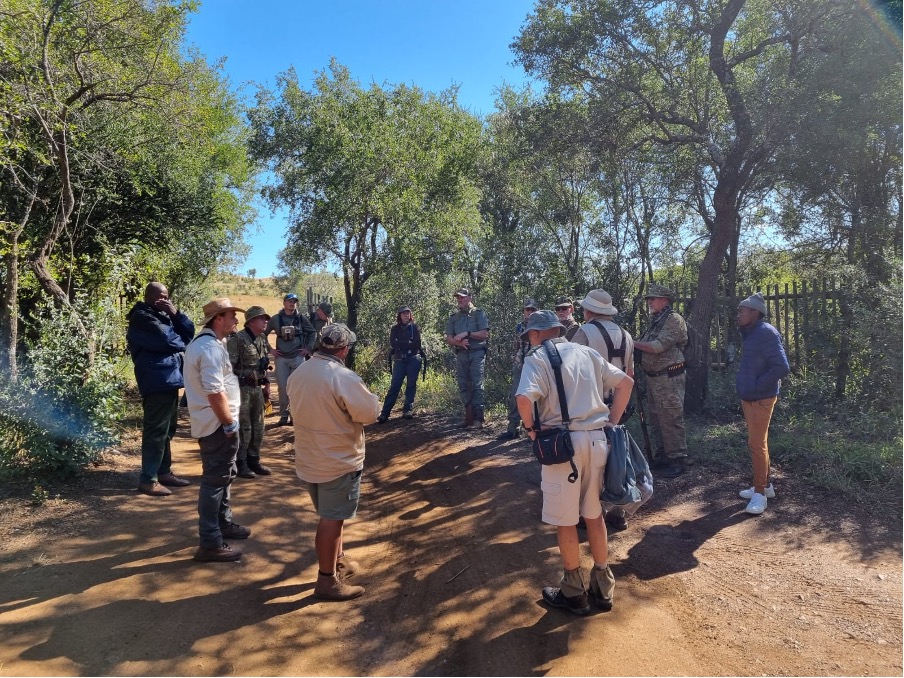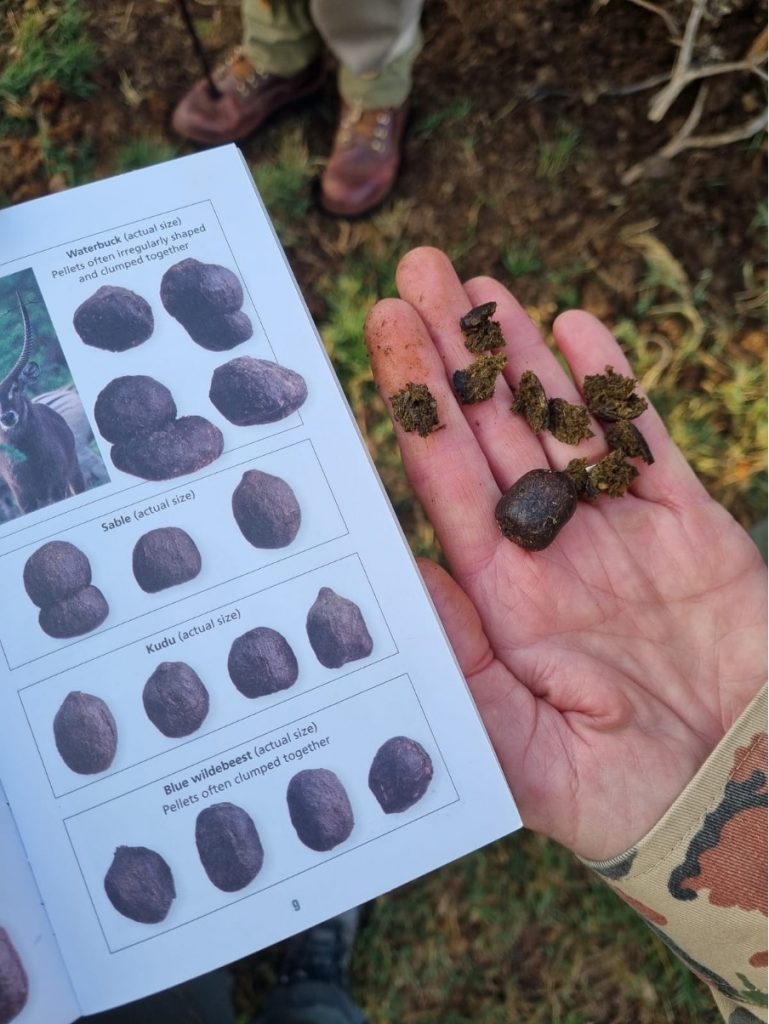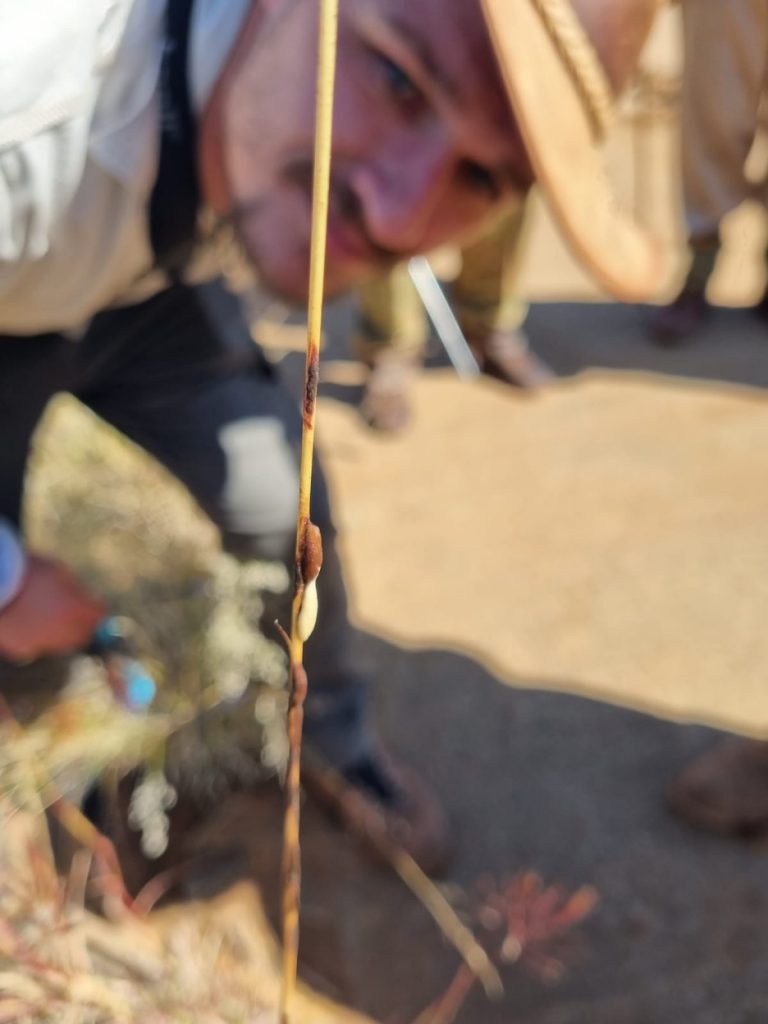Report by Jacek Zawada, photographs by Megan Griffiths.
We all seemed to arrive a bit late at Pilanesberg for our Veld Management test and mammal behaviour practical. This was mostly attributed to the earlier gate times, due to the earlier sunset. The lateness was also attributed to the pouring rain that seemed to hit everyone as we arrived at Pilanesberg.
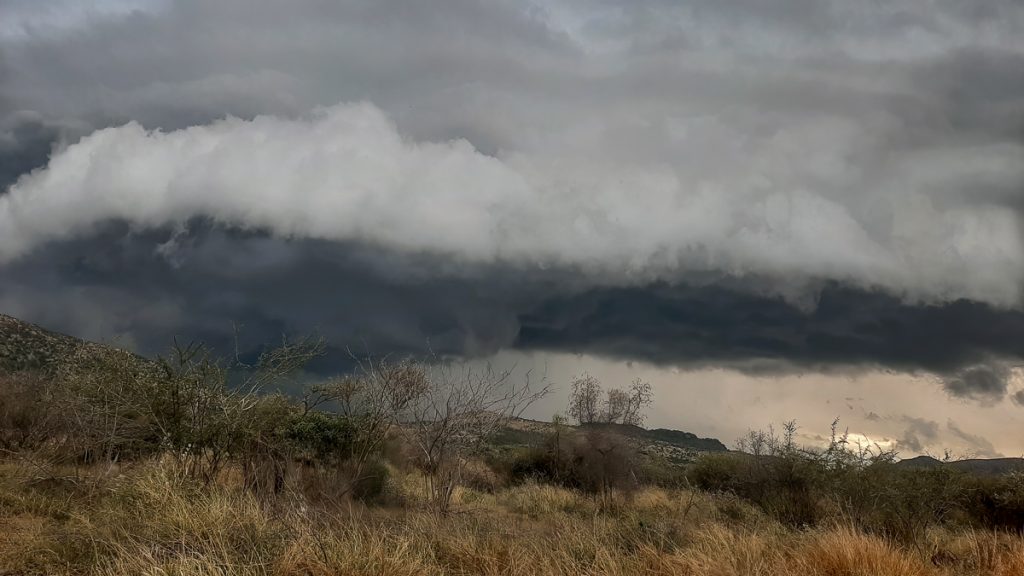
So, if you happened to be driving into Manyane campsite late on Friday evening, you would see a couple of cars parked at the Education centre with all of their inside lights on, housing students doing last-minute cramming before the test. This was then proceeded with a last desperate dash to get inside before becoming completely drenched.
The return trip after the veld management test to Potokwane proved quite a slippery affair with all of the mud that needed to be navigated in the wet and in the dark. As most students arrived late, there was a definite stalling of setting up camp and just chatting under the Potokwane roof, waiting for the rain to cease. There were a few last-minute plans that had to be made for some students to feed themselves as there would be no fire to braai on that evening.
The Saturday morning, everyone woke up early to a chilly, cold, and relatively wet morning. All the students met at the Education Centre to continue with the mammal lecture, which was to be continued by Ulrich Oberprieler. The majority of the lectures were already attended to at Freedom Park the week before, which we were all grateful for so that we could spend more time in the park than in the lecture hall. Some of the students found a fantastic well preserved hippo track on the Potokwane road, which was exciting as it is relatively far from water and discovered that hippos could travel up to 10 km from their water source in search for grazing.
After the lecture, we had a biofacts presentation by Ulrich, which we all found very fascinating as well as difficult. You would think that it would be easy to tell if a tooth was a hippo tooth or an elephant tooth or the difference between a jaw of a wildebeest and a zebra. Ulrich has definitely quite the collection of biofacts, and we all found it very impressive.
After the biofacts we were then asked to create an ethogram of the behaviour of the impala around the Education Centre. This was very difficult, as the ethogram was meant to be taken over fifteen minutes. And as no sooner as you had chosen your individual impala to observe, it would just simply walk off into the veld where you were no longer able to observe it. This was both frustrating and enlightening as to the amount of effort that is put into a full behavioural study. We were then asked to go for a game drive, which we were more than happy to oblige. However, we did need to observe what our sightings were doing, the period of the sighting and all of the ethology that is involved with that. We then went back to Potokwane to do the maths for our ethograms and report our observations back.
After a very cold day of observing biofacts and animal behaviours, the grasslands team stepped up and made a very respectable fire for all of us to warm ourselves and to discuss the day’s events as well the mounting excitement of a bush walk in a big five game reserve the next day.
The next day broke clear and sunny and vaguely warm, or at least warmer than it had been for the last couple of days. We listened to Jeremy who gave us the rundown of manoeuvring in a big five park. We were split into two groups that would each go with two armed CPU rangers.
We then all met a Malatse hide, where the two groups went in differing directions. The morning did not yield great or many sightings on foot. However, there was much to be learned from the bush and the signs of the animals that were there not so long ago.
It was very interesting and exciting to now be able to tell the difference between a white rhino and a black rhino, just by its spoor, or to differentiate between a leopard and a hyena track. Don’t forget to get your hands and knees dirty when tracking!!! The sighting/finding of the morning was the pasting of a Hyena right by the side of the road near the hide.
This weekend has definitely given us a better appreciation of the small tracks and signs in the bush. And our lecturers (Ulrich, Jeremy and the CPU rangers) gave us new eyes with which to view the bush and the animals therein. We give many thanks to Peter, Piet and Jeremy for coordinating the weekend. As well as the knowledgeable Ulrich, and last but not least, the CPU rangers for making this weekend possible.
